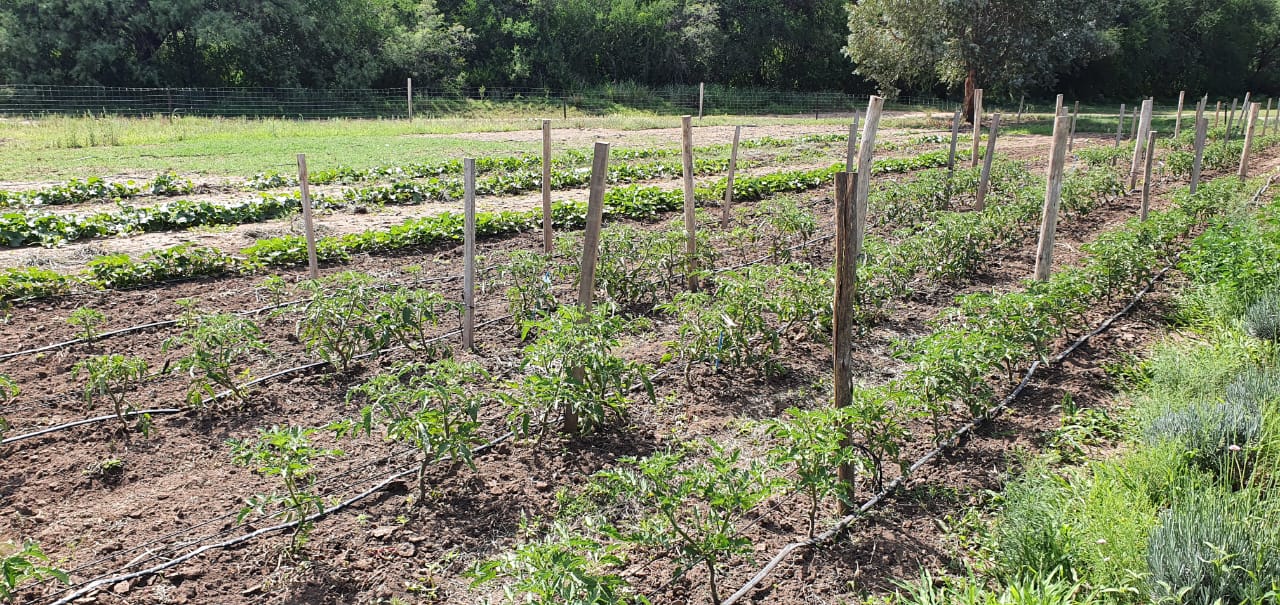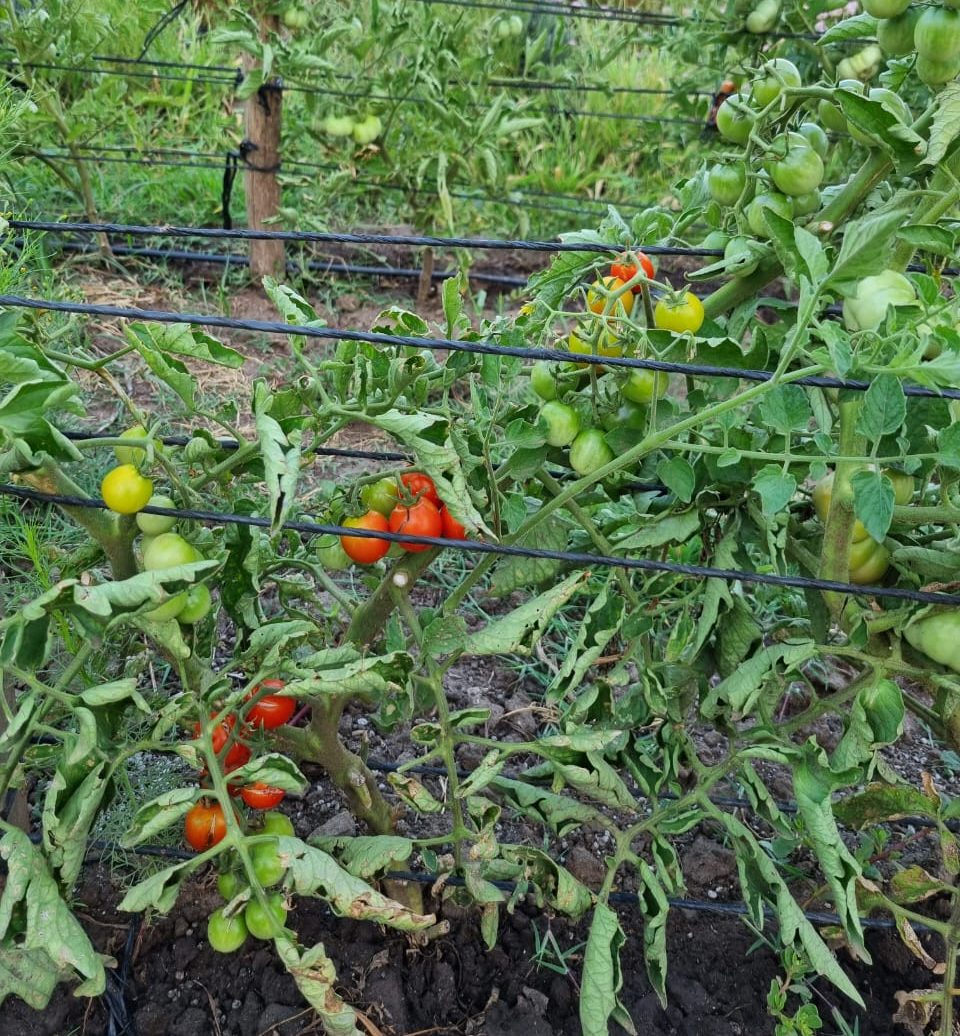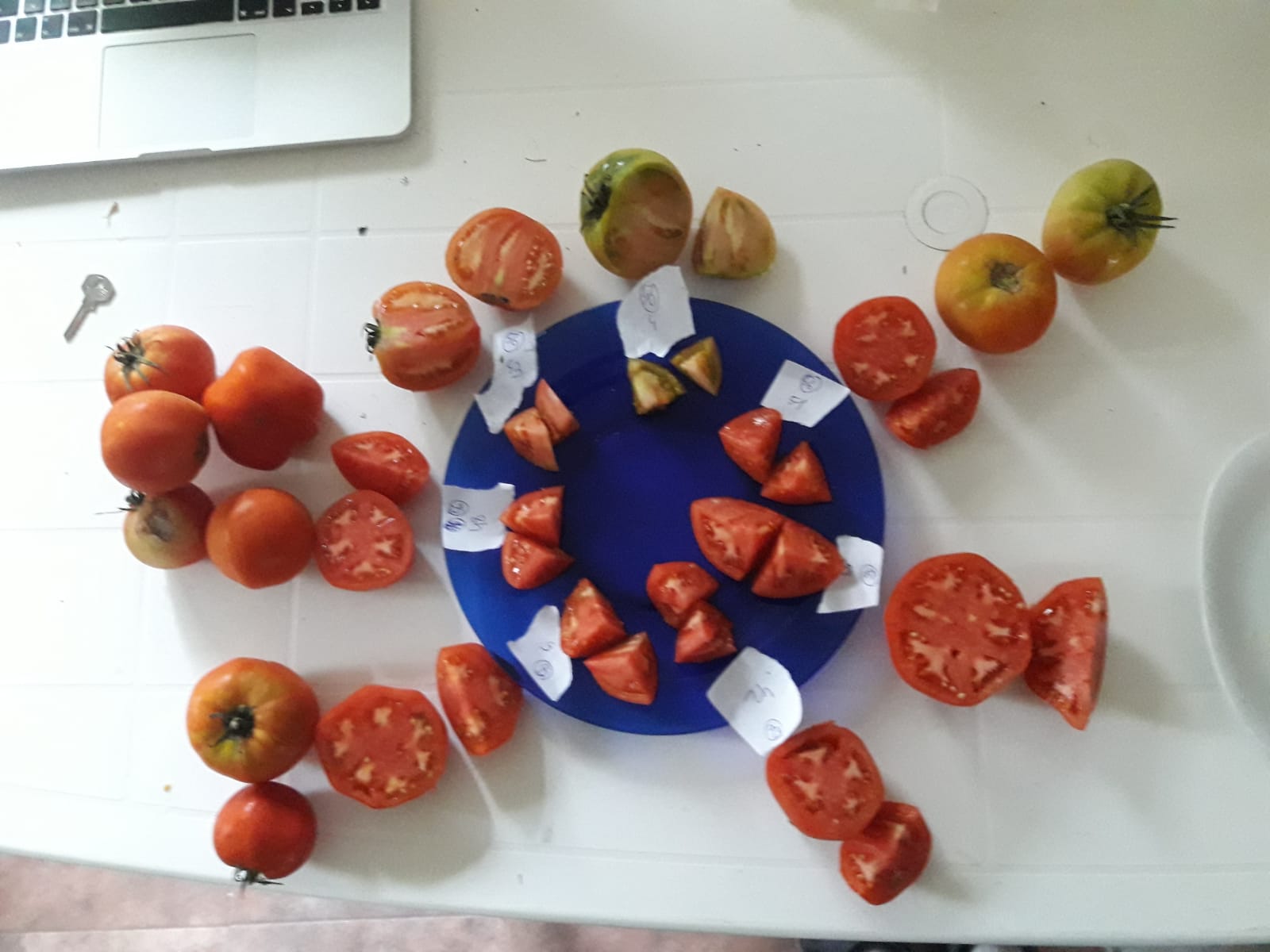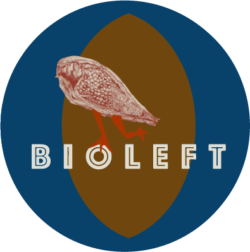Together with the project “To the rescue of the Creole tomato” of the Faculty of Agronomy of the University of Buenos Aires and biodynamic farmers of General Rodríguez (Buenos Aires) and Los Molles (San Luis), from Bioleft we have been working on a process of improvement participatory tomato. We already have two work campaigns!
In this note, we share some learnings from the experience:
After a first campaign (2020-2021) in which we tested a high heterogeneity of Creole tomato materials, entries 7 and 56 (find them on our platform!) were chosen to continue with the evaluation since they were the most attractive for the objectives of the producers with whom we develop the experience, such as tolerance to high temperatures, behavior while droughts in critical moments of the cycle and mainly the search for TOMATO FLAVOR; the need to have a production that is distinguished by its flavor to be consumed in salads and fresh preparations.
The evaluation of this campaign was of each plant in particular, observing, registering and evaluating and choosing those that were better in terms of health and tolerance to abiotic stresses to multiply their seeds. The seeds used came not only from the multiplications that had been made in General Rodríguez the previous year, but also from those carried out at the Gorina Experimental Station, and from forced self-fertilization carried out at the Faculty of Agronomy of the University of Buenos Aires from the original seeds provided by germplasm banks.

- Growers agreed that entry 7 had much more intra-entry variability than 56.
- As in the previous campaign, they also observed that entry 7 yielded more than 56: in this case the performance of entry 7 turned out to be approximately 25% higher.
Adverse factors and the response of tomatoes:
- One of the farmer observed a difference between the inputs regarding the effectiveness of the implantation. He posted a notably lower inning 7 implantation percentage than 56 (73 vs. 98%, respectively), so he had to make replacements with seedlings. Even in more advanced stages, plant death was observed. One hypothesis is that they could have been affected by a fungus from uncomposted manure with which it was fertilized in one of the establishments, an unusual practice on its part. If so, since said fertilization was common for both entries, it could be thought that entry 56 has a greater tolerance to the causal pathogen, although more tests would have to be carried out on this entry to study the case.
- Another farmer, whose trials are located in the province of San Luis, was particularly affected by the severe drought at the beginning of January this year, due, on the one hand, to the more arid climate of Los Molles and, on the other, to the less availability of water for irrigation. One hypothesis is that this may have contributed to lower yields than those recorded in the previous campaign: 1 kg per plant for entry 7 and 0.7 kg per plant for entry 56.
How does this story continue?
We continue exchanging and learning together, and we are planning for the 2022-2023 campaign to work with the same inputs and deepen our knowledge and behavior of these materials in relation to the objectives of this group of farmers.


